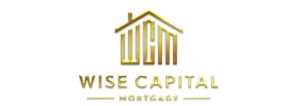FHA 3.5% Down FHA Loan VS 3% Conventional Loan Which Is Better
People ofter wonder what type of mortgage loan would be better as a first time home buyer. It all really depends on the individual scenario and as an individual you need to take multiple factors into consideration. The main considerations to review would be things like- Credit Score Requirements, Mortgage Insurance Differences, Down Payment Differences, Income Limits and Debit to Income Ratio Requirements and more…
| 3% Down Conventional Mortgage Loans- Fannie Mae- Home Ready, Freddie Mac- Home Possible. This program is great for a person or persons with a good credit profile a low down payment, and make under the income restrictions the program has. This program is a great alternative to an FHA loan as this product has a monthly mortgage insurance factor but the mortgage insurance can be removed once the mortgage reaches a 20% equity position. This product is also good because it has a reduced mortgage insurance factor as opposed to a regular conventional loan. In addition to its down payment requirement of as little as 3 percent, Home Possible now offers more options to responsibly increase homeownership for more of your borrowers. Do-it-yourselfers can apply sweat equity to assist in meeting their down payment and closing costs, co-borrowers who do not live in the home can be included for a borrower’s one-unit residence, borrowers are permitted to own other properties, and more – all with competitive pricing and the ease of a conventional mortgage. 3.5% Down FHA Loans- Ginne Mae and the dedicated FHA lenders originate FHA mortgage loans. An FHA loan typically starts with a minimum down payment of 3.5%, does not have income restrictions, typically will have a bit lower interest rate than a conventional loan, and has non-cancelable mortgage insurance. FHA loan sometimes will also allow higher debt to income ratios, allow the use of gift funds in more instances, and has a different set of underwriting and packing guidelines that a conventional loan. FHA loans are also great for multiple family owner occupied purchased as well because you can purchase a duplex, triplex, or 4-plex with a minimal down payment. A Quick ComparisonLoan originators should always explore Fannie Mae’s HomeReady® mortgage program with any low-to-moderate income borrower considering FHA financing. Although we will delve into HomeReady®-specific underwriting considerations shortly, the following is a comparison of these loans’ basic differences:Although standard FHA 203(b) mortgage financing offers borrowers down payment options as low as 3.5%, Fannie Mae’s conventional HomeReady® program allows low-to-moderate income borrowers the opportunity to close on a home with a down payment of as little as 3%.Fannie Mae’s conventional HomeReady® alternative allows borrowers to petition for the removal of their mortgage insurance once their LTV amortizes down to 80%.Now all information on this page is subject to change and interpretation from an underwriter, this is just a basic outline of the main differences between FHA mortgage loans and Conventional Mortgage Loans. |
